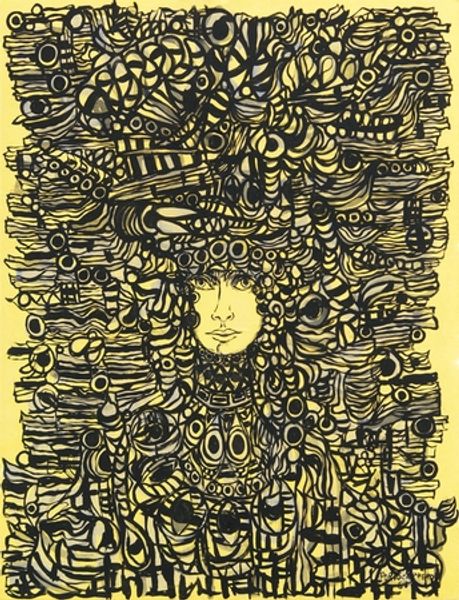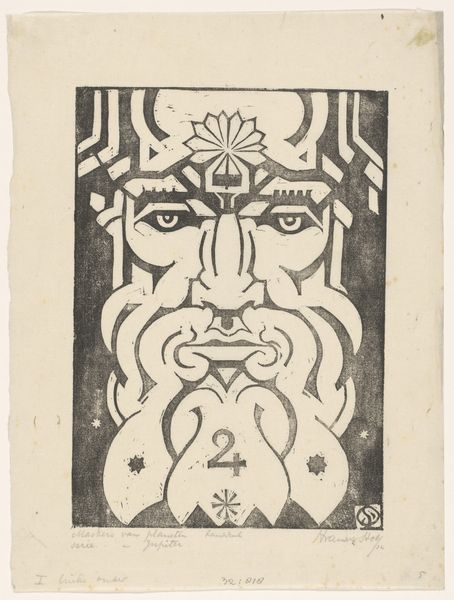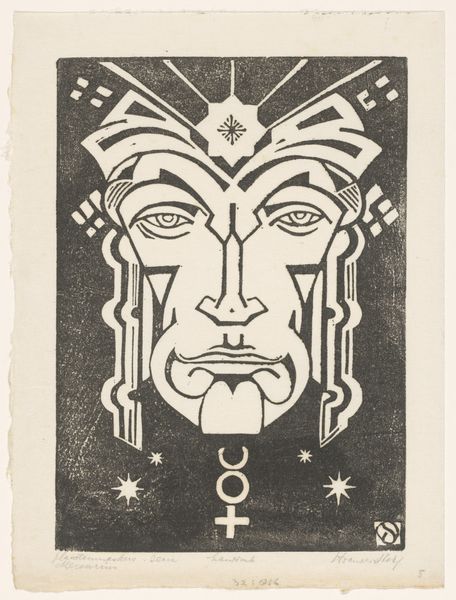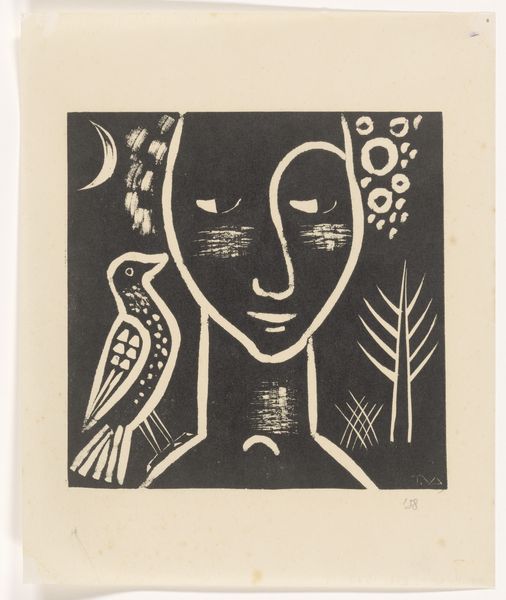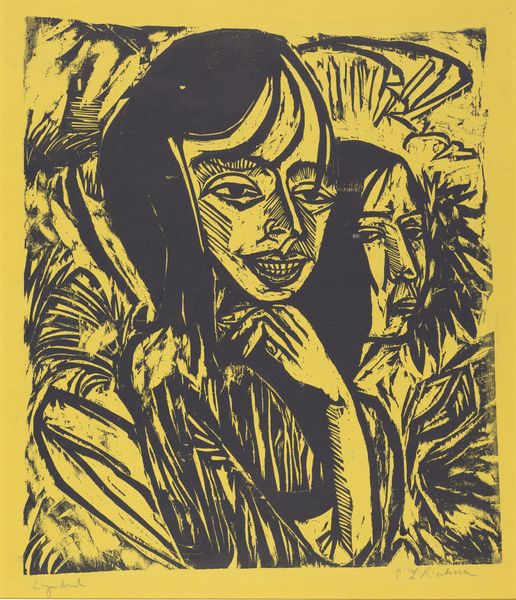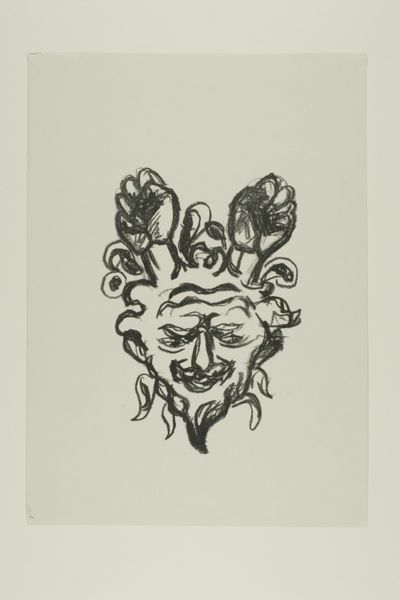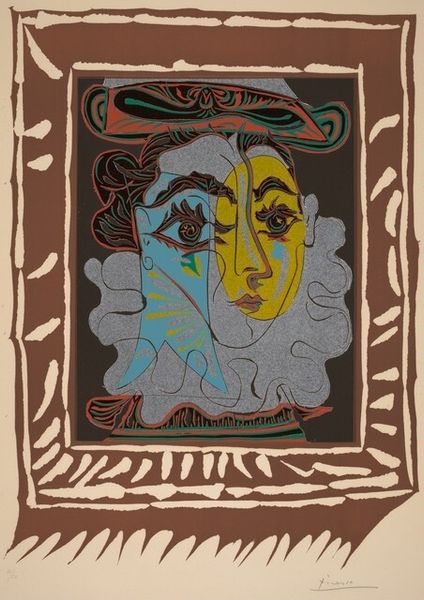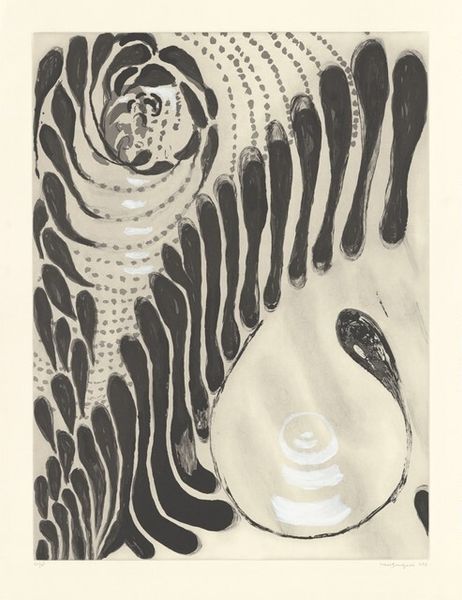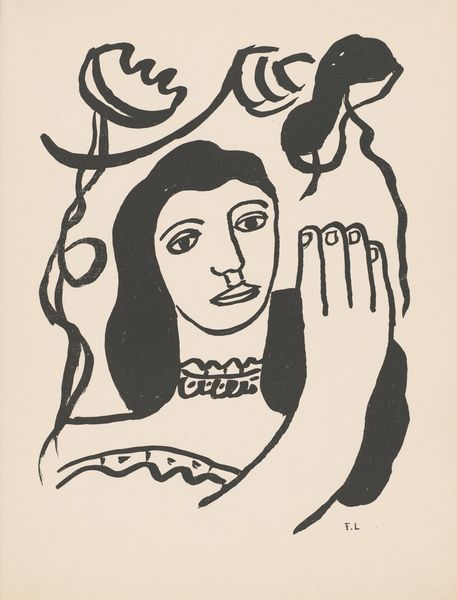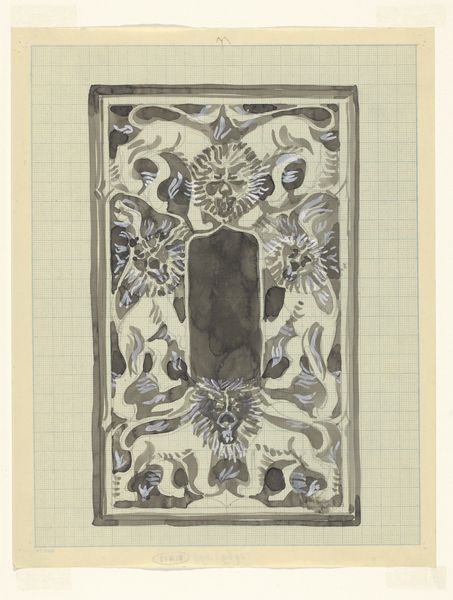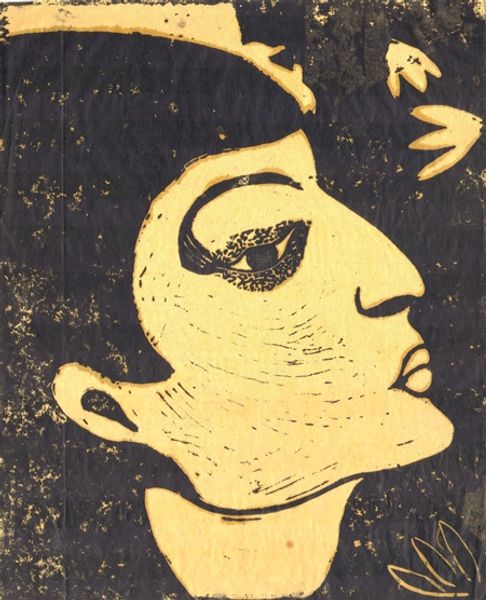
Copyright: Modern Artists: Artvee
Curator: Look at the striking contrast in Matisse's linocut, "Isaia," created in 1938. What's your initial reaction? Editor: Austere, yet charming. The sharp, white lines carved into the black background create a surprisingly delicate balance, like a paper cutout, although I can also detect the influence of symbolism in this work. Curator: Indeed. Matisse often used line as a means of exploring form and expression. In this portrait, which features stylized floral motifs, the linocut medium, while seemingly simple, brings complexity when we consider issues of representation during the interwar period. One can read the use of stark black and white, coupled with the direct gaze, as a meditation on clarity amid societal and political unease. Editor: You highlight an essential duality! I notice the recurring flower patterns, both framing the face and adorning the garment, create a flattened, almost decorative space. Their rigid geometry contradicts the fluidity of the portrait, a push and pull that invites consideration. The very reduction to line enhances the sitter's iconic essence; like Matisse is revealing what is truly important about Isaia. Curator: Right! In the context of art history, let's note that Matisse continuously challenged traditional artistic practices. In this piece, we could argue that the flowers symbolize life and fragility, contrasting the potentially harsh realities facing individuals in that era. Her focused look challenges viewers. Who was she? What circumstances molded her steely gaze? These are the questions I encourage our listeners to contemplate. Editor: What I'm walking away with is a clearer appreciation for how Matisse has distilled an individual into the barest essence, but one still holding complexities revealed through contrasts in pattern and composition. Curator: Precisely. It's this stark simplicity combined with symbolic layers that render "Isaia" unforgettable, opening space for discussions about art, identity, and historical circumstances.
Comments
No comments
Be the first to comment and join the conversation on the ultimate creative platform.
